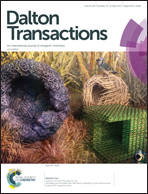Revisiting the behaviour of BiVO4 as a carbon dioxide reduction photo-catalyst†
Abstract
Bismuth vanadate is a widely known photocatalyst for the hydro-reduction of CO2. In spite of the great appeal of such a catalytic system, problems arise due to deactivation of the catalyst with consequent low reaction yield. We have investigated the catalyst behavior during methanol production and have found that the catalyst irreversibly loses vanadium from the structure whilst depositing bismuth oxides on the surface of the catalyst. While catalyst activity can be restored upon heating, leaching of vanadium, leading in long term to catalyst decomposition, is unavoidable and irreversible.



 Please wait while we load your content...
Please wait while we load your content...